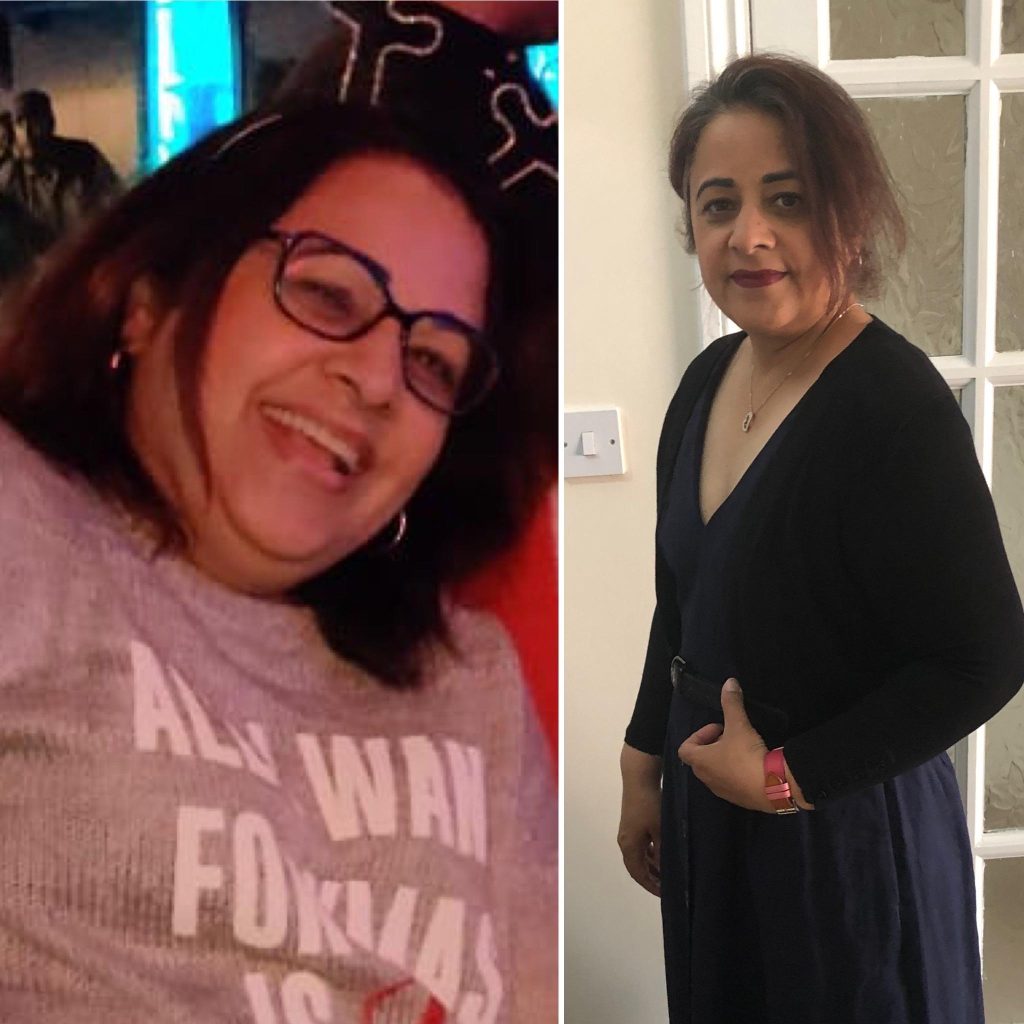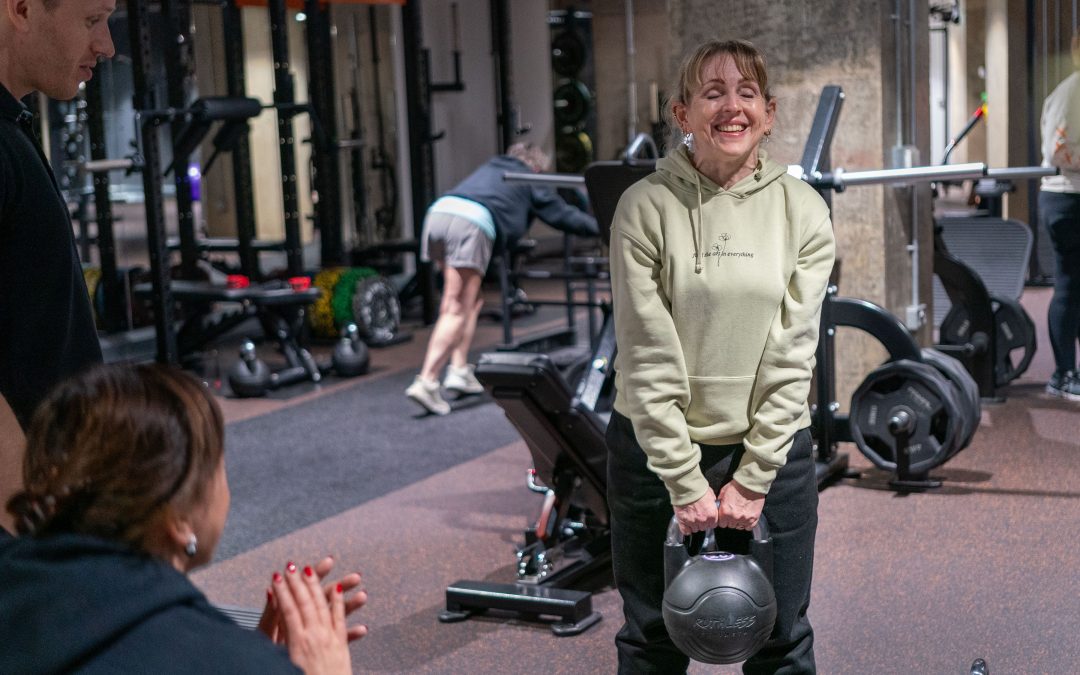If you’ve ever wondered, “Does lowered oestrogen slow metabolism over 40?” you’re not alone. This is one of the most common questions we hear from women navigating menopause and postmenopause.
As oestrogen levels decline, many women experience frustrating changes in their body: slower weight loss, increased body fat, and a feeling that their metabolism has hit the brakes.
The good news? There’s a lot you can do to work with your hormonal changes, rather than against them.
In this article, we’ll break down how menopause affects your metabolism, what you can do to maintain a healthy weight, and the practical steps you can take to start seeing real results again.

Hormones and Weight Loss After 40
Many women over 40 feel like their body is no longer playing by the rules. What used to work in their 20s and 30s just doesn’t anymore. Hormonal changes, particularly the decline in oestrogen, have a significant impact on how your body stores fat, regulates blood sugar levels, and builds muscle mass.
Lower oestrogen levels are closely tied to increased insulin resistance, which means your body becomes less efficient at using glucose for energy.
This leads to spikes and crashes in blood sugar, cravings, and more fat storage, especially around the middle.
Not only that, but oestrogen is anabolic, meaning it helps preserve lean muscle mass. When oestrogen drops, so does muscle mass, and since muscle is a key driver of metabolic rate, your overall metabolism slows down.
Why Does Your Oestrogen Level Matter?
Oestrogen isn’t just about fertility. It affects everything from mood to metabolism. When Oestrogen levels dip, women tend to gain weight more easily and lose muscle mass more quickly.
This shift in body composition leads to a lower metabolic rate and increased fat distribution around the belly, hips, and thighs.
This is why so many menopausal and postmenopausal women struggle with body weight, despite eating “healthy” and staying active.
Hormone replacement therapy (HRT) or hormone therapy, including testosterone in some cases, can help some women by improving mood, motivation, and muscle retention. But HRT isn’t the whole solution, it’s what you do with your nutrition and activity matters just as much.

“The impact of female hormones, especially the ones replaced by HRT, on motivation is significant. I used to underestimate how much they influenced mood and drive. Once I started HRT, my energy and mood completely changed, and I felt like I had a spring in my step again. A big turning point for me was starting to take the dog out for walks. Initially, I didn’t want to do it, but once I started, it became a routine. Now, it’s just a part of my daily life, and I really enjoy it. Exercise has also become a key part of my routine. I’ve lost 3 stone. I feel far more confident in how I look and I’m happy to go out in t-shirts and trousers.
– Rav Bhatti (47), Trinity Client
5 Effective Ways to Boost Your Metabolism
Even with lowered oestrogen, you can increase your metabolic rate. Here are five powerful ways to support your metabolism during menopause:
1. Lift Weights to Build Muscle
Strength training is a game-changer. Unlike long-duration cardio, which can break down muscle, lifting weights helps build it. Muscle is metabolically active tissue, meaning it burns more calories at rest than fat does.
Losing muscle = slower metabolism. Gaining muscle = metabolic boost.
On top of that, resistance training triggers the “afterburn effect” (EPOC), where your body continues to burn calories for up to 38 hours post-workout. This can add up to hundreds of extra calories burned each week—simply by lifting weights 3x a week.
2. Prioritise Protein and Eat Enough
Your body needs the right materials and energy to build muscle. That means enough calories and plenty of protein. As oestrogen levels decline, your body becomes less efficient at muscle protein synthesis.
Women over 40 need more protein than they think, you should aim for at least 0.4g per kg of body weight post-workout. For a 70kg woman, that’s around 28g of protein. Without adequate intake, your body won’t rebuild muscle effectively, and your metabolism won’t get the boost it needs.
3. Manage Blood Sugar Levels
When oestrogen drops, your ability to regulate blood sugar becomes compromised. This leads to cravings, crashes, and fat gain, especially around the belly.
The fix? Focus on blood sugar-balancing meals: combine protein and fibre with every meal, reduce refined carbs, and don’t skip meals. This stabilises insulin levels and helps prevent the body from storing excess fat.
4. Reduce Long-Duration Cardio
Endless cardio might have worked in your 20s, but for women over 40, it often does more harm than good. Long sessions can be catabolic, meaning they break down muscle, which is the very thing you need to keep your metabolism high.
Short, low-impact strength training and walking are more effective for fat loss and overall health at this stage of life.
5. Consider Hormone Replacement Therapy (HRT)
For some women, hormone therapy including testosterone can help reduce symptoms like low mood, low energy, and poor muscle retention. While the NHS doesn’t always prescribe testosterone, many private clinics offer it as part of menopause management.
We work with an in-house menopause expert who helps our members assess whether HRT is right for them. When combined with the right lifestyle changes, HRT can be a helpful tool to improve insulin sensitivity, muscle maintenance, and overall wellbeing.

How to Lose Oestrogen Weight Gain
You may feel like your body is stuck and nothing will work, but we promise there is a way forward. To reverse weight gain caused by hormonal changes, your approach needs to be tailored to your current needs, not the strategies that worked in your 30s.
Here’s what works for our clients:
1. Build and Maintain Muscle
Focus on strength training at least three times a week. Lift heavier weights for fewer reps to support muscle growth and stimulate metabolism. Remember, muscle isn’t just about looking toned, it’s the engine that burns calories and keeps your body strong and active.
2. Balance Blood Sugar with Smart Nutrition
Eat meals that combine protein, healthy fats, and complex carbohydrates. This will keep your energy stable, reduce cravings, and lower fat storage. Avoid crash diets or skipping meals, which can damage metabolism and increase stress hormones.
3. Stress Less, Sleep More
Chronic stress elevates cortisol, a hormone that encourages fat storage (especially belly fat). High stress also interferes with sleep, muscle repair, and motivation. Try daily walking, breathwork, gentle exercise, and better sleep hygiene to keep stress levels in check.
4. Rethink “Healthy”
Many women think they’re eating healthy because they’re choosing salads or skipping carbs, however, if you’re not getting enough protein or calories, your body will slow everything down. What you eat should fuel your metabolism, not restrict it.
How Trinity Can Help You
If you feel like your body’s working against you, even when you feel as though you’re doing everything right, you’re not alone. Weight loss after 40 is different, and it requires a different approach.
At Trinity, we’ve helped over 7,000 women drop 1–2 dress sizes in just 12 weeks—and 97% say they’d recommend us to a friend.
We don’t do quick fixes, fad diets, or punishing workouts. Our programme is built specifically for women in menopause, and it works—because it’s designed to work with your body, not against it.
What makes Trinity different:
- Built for hormonal changes – Tailored to your stage of menopause
- No extreme dieting – Real food, no carb cutting or starvation
- Strength-based training – Boosts metabolism and tones your body
- Expert coaching – Personalised support and accountability
- Sustainable results – Habits that last, not weight that rebounds




